Skip to results
Advanced search
NARROW
1-20 of 117279
Sort by
Journal

FEMS Microbes
FEMS Microbes is an open access journal covering all aspects of basic and applied microbiology. It includes commentaries, letters, and mini-reviews, as well as case studies, negative results, replication studies and methods or protocol papers.
Journal

microLife
microLife is an Open Access journal from FEMS and EAM, reporting research of the highest standard, novelty and significance in microbiology and related disciplines. All microbes, including bacteria, viruses, parasites, protists and fungi are covered.
Journal
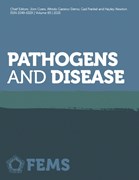
Pathogens and Disease
An official journal of the Federation of European Microbiological Societies. Publishes hypothesis- and discovery-driven studies on pathogens, host-pathogen interactions, host response to infection and their molecular and cellular correlates.
Journal
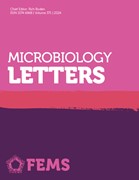
FEMS Microbiology Letters
An official journal of the Federation of European Microbiological Societies. Publishes concise papers that merit rapid publication and cover all aspects of microbiology, including virology. Any type of microorganism and virus falls within the scope of the journal.
Journal
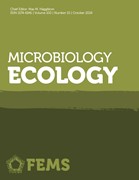
FEMS Microbiology Ecology
An official journal of the Federation of European Microbiological Societies. Publishes papers that cover microorganisms in soil, aquatic and atmospheric habitats ? including extreme environments ? and includes natural, artificial and managed systems.
Journal
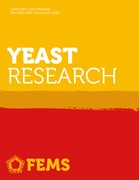
FEMS Yeast Research
An official journal of the Federation of European Microbiological Societies. Publishes research that bridges the gap between pure and applied research on conventional and non-conventional yeasts and yeast-like organisms.
Journal
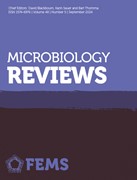
FEMS Microbiology Reviews
An official journal of the Federation of European Microbiological Societies. Publishes invited reviews from leading authors to provide comprehensive and authoritative coverage on key issues in microbiology.
Journal Article
ACCEPTED MANUSCRIPT
Vaginal Candida albicans infections: host-pathogen-microbiome interactions
Marisa Valentine and others
FEMS Microbiology Reviews, fuaf013, https://doi.org/10.1093/femsre/fuaf013
Published: 10 May 2025
Journal Article
ACCEPTED MANUSCRIPT
Exploring heme and iron acquisition strategies of Porphyromonas gingivalis – current facts and hypotheses
Michał Śmiga and Teresa Olczak
FEMS Microbiology Reviews, fuaf019, https://doi.org/10.1093/femsre/fuaf019
Published: 09 May 2025
Journal Article
ACCEPTED MANUSCRIPT
Comparison of stress tolerance mechanisms between Saccharomyces cerevisiae and the multi-stress-tolerant Pichia kudriavzevii
Thasneem Banu Frousnoon and others
FEMS Yeast Research, foaf024, https://doi.org/10.1093/femsyr/foaf024
Published: 09 May 2025
Journal Article
ACCEPTED MANUSCRIPT
Global Transcription Machinery Engineering in Yarrowia lipolytica
Ewelina Celińska and Yongjin J Zhou
FEMS Yeast Research, foaf023, https://doi.org/10.1093/femsyr/foaf023
Published: 08 May 2025
Journal Article
Editorial: celebrating the biogeosphere at the joint meeting of International Societies for Environmental Biogeochemistry and Subsurface Microbiology
Lotta Purkamo and others
FEMS Microbiology Ecology, Volume 101, Issue 5, May 2025, fiaf049, https://doi.org/10.1093/femsec/fiaf049
Published: 08 May 2025
Journal Article
ACCEPTED MANUSCRIPT
Impact of pesticides on soil health: identification of key soil microbial indicators for ecotoxicological assessment strategies through meta-analysis
Mark Swaine and others
FEMS Microbiology Ecology, fiaf052, https://doi.org/10.1093/femsec/fiaf052
Published: 08 May 2025
Journal Article
ACCEPTED MANUSCRIPT
Adaptations in development and secondary metabolism of Aspergillus nidulans isolates from the Erbil province in Iraq
Get access

Shkar R K Rostam and others
FEMS Microbiology Letters, fnaf043, https://doi.org/10.1093/femsle/fnaf043
Published: 08 May 2025
Journal Article
ACCEPTED MANUSCRIPT
Metagenomic and metatranscriptomic analysis reveals the enzymatic mechanism of plant polysaccharide degradation through gut microbiome in plateau model animal (Ochotona curzoniae)
Get access

Xueying Gan and others
FEMS Microbiology Letters, fnaf045, https://doi.org/10.1093/femsle/fnaf045
Published: 08 May 2025
Journal Article
The NitroSpeed Taniborbactam NP test as a rapid test for detection of β-lactamase-mediated susceptibility to taniborbactam
Otávio Hallal Ferreira Raro and others
FEMS Microbiology Letters, Volume 372, 2025, fnaf044, https://doi.org/10.1093/femsle/fnaf044
Published: 06 May 2025
Image
Detailed protocol of the NitroSpeed Taniborbactam NP test. TAN, taniborbact...
in
FEMS Microbiology Letters
>
The NitroSpeed Taniborbactam NP test as a rapid test for detection of β-lactamase-mediated susceptibility to taniborbactam
Published: 06 May 2025
Figure 1.
Detailed protocol of the NitroSpeed Taniborbactam NP test. TAN, taniborbactam; ETP, ertapenem; MβL, metallo-β-lactamase. Yellow colour: enzyme is inhibited by TAN; red colour: enzyme is not inhibited by TAN.
Journal Article
ACCEPTED MANUSCRIPT
Custom-made medium approach for effective enrichment and isolation of chemolithotrophic iron-oxidizing bacteria
Tomoki Uchijima and others
FEMS Microbiology Ecology, fiaf051, https://doi.org/10.1093/femsec/fiaf051
Published: 05 May 2025
Journal Article
Phylogenetic clustering of microbial communities as a biomarker for chemical pollution
Thomas P Smith and others
FEMS Microbiology Ecology, Volume 101, Issue 5, May 2025, fiaf047, https://doi.org/10.1093/femsec/fiaf047
Published: 02 May 2025
Image
Phylogenetic structure in community responses to chemicals. (a) If chemical...
in
FEMS Microbiology Ecology
>
Phylogenetic clustering of microbial communities as a biomarker for chemical pollution
Published: 02 May 2025
Figure 1.
Phylogenetic structure in community responses to chemicals. (a) If chemical stressors negatively affect microbes (indicated by a cross) in a phylogenetically conserved way, i.e. similar taxa are all impacted by a given chemical, then we would expect to observe phylogenetic clustering in communities





